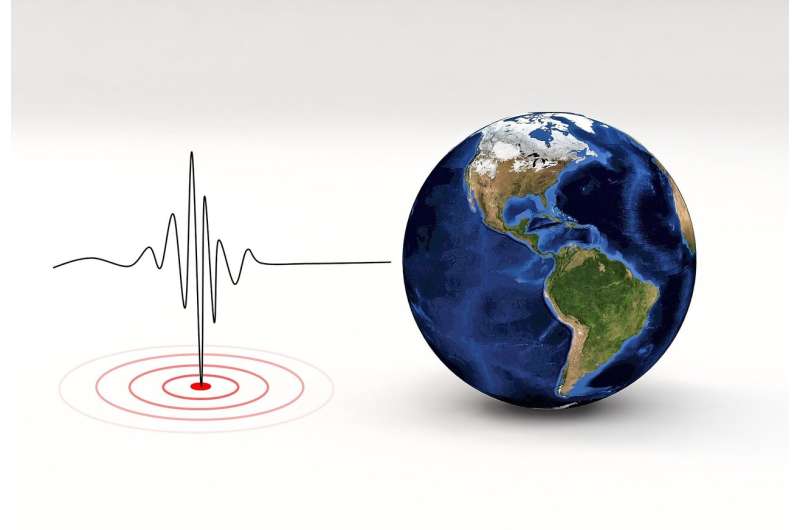Graphic 'beach ball' representations calculated for U.S. underground nuclear tests can aid monitoring

Researchers at Lawrence Livermore National Laboratory have calculated moment tensors for 130 underground nuclear and 10 chemical test explosions that have taken place at the Nevada National Security test site.
Often represented graphically to resemble a striped "beach ball," moment tensors "are essentially a mathematical concept that's used to describe forces that drive earthquakes," said Andrea Chiang, co-author of the new study published in the Bulletin of the Seismological Society of America.
Instead of the forces along an earthquake fault, the moment tensor solutions calculated by Chiang and Michael Pasyanos represent the forces of implosion, explosion and collapse that occurred during the underground tests. These calculations, the researchers show, can be used to distinguish explosions from earthquakes, and estimate yield for the explosions.
Pasyanos and Chiang said compiling an extensive database of moment tensor solutions for this unique set of carefully documented explosions will be useful for researchers tasked with explosion monitoring. Their data set reflects nuclear explosions at the site from 1970 to 1992, and chemical explosions from 1993 to 2019.
"Because of the moratorium on nuclear testing, it's kind of more important than ever to do analysis on legacy data," said Pasyanos. "We're hoping that this data set can be used by others in the community to test and validate and improve on methods."
In the past, moment tensor solutions were less useful for explosion monitoring than earthquake analysis due to assumptions made in the equations—such as ignoring any volume changes during the event—that sidestepped the important physics of explosions. More recently, work by Chiang and others has refined these equations to include this type of variable.
In some preliminary tests, the researchers were able to use aspects of the Nevada moment tensor solutions to categorize seismic events as either earthquakes or explosions. They also tested whether moment—a combination of force, slip and area of fault rupture that seismologists use to determine earthquake size—could be used to determine yield for an explosion.
"We feel as a community that moment and moment magnitude is kind of a better quantifying parameter for an earthquake, for instance, so the natural question is, is it also better for yield estimation?" Pasyanos said.
The study suggests that moment doesn't always translate directly to yield, but is complicated by the type of rock surrounding the explosion, as earlier studies have also indicated.
"If the explosion happens in strong rock, that will couple well and produce a high seismic moment," Pasyanos explained. "If it's in weak rock, the same size explosion would couple poorly, and you'd get a smaller seismic moment for the same yield."
The Nevada explosion recordings are a mix of analog and digital data, and the study highlights the importance of preserving seismic data sets for future analyses, the researchers note. In many cases, it can be a race against the clock to preserve data on media that is physically deteriorating or can no longer be read with current technologies, or a time-consuming effort to read and digitize paper records.
Chiang also stressed the importance of the people who worked at seismic networks, and the details they can contribute about the stations and instruments, in parsing past seismic records. "It's important to preserve their knowledge as well," she said.
More information: Michael E. Pasyanos et al, Full Moment Tensor Solutions of U.S. Underground Nuclear Tests for Event Screening and Yield Estimation, Bulletin of the Seismological Society of America (2021). DOI: 10.1785/0120210167
Journal information: Bulletin of the Seismological Society of America
Provided by Seismological Society of America

















